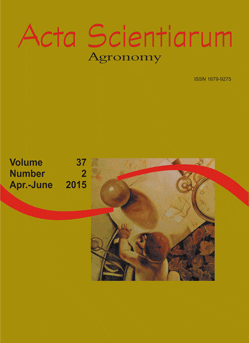<b>Parental selection for the formation of interspecific hybrid populations of oil palm
Abstract
The objective of this work was to select families with superior performance and large genetic variability for diallel crosses for potential use in the pre-breeding of oil palm. The experiment consisted of 42 full-sib families divided into three trials with 16 families and 3 witnesses in common in randomized blocks, with four blocks and 12 plants per block. The characteristics evaluated in the experiment were number of bunches per plant (NBP), bunch weight per plant (BWP) and bunch average weight per plant (BAW). The estimation of variance components showed that there was greater genetic variance within families than between families. The heritability for all traits was high, above 0.75, and the coefficient of environmental variation was low to moderate for all traits (between 4 and 13). Tocher’s method separated families into seven groups, whereas the UPGMA method identified six groups. To use the best families in diallel crosses, families 15, 14, 22, 21, 28, 37, 33 and 39 were selected based on individual performance as determined by the Scott-Knott test and genetic diversity by grouping.
Downloads
DECLARATION OF ORIGINALITY AND COPYRIGHTS
I Declare that current article is original and has not been submitted for publication, in part or in whole, to any other national or international journal.
The copyrights belong exclusively to the authors. Published content is licensed under Creative Commons Attribution 4.0 (CC BY 4.0) guidelines, which allows sharing (copy and distribution of the material in any medium or format) and adaptation (remix, transform, and build upon the material) for any purpose, even commercially, under the terms of attribution.




















































